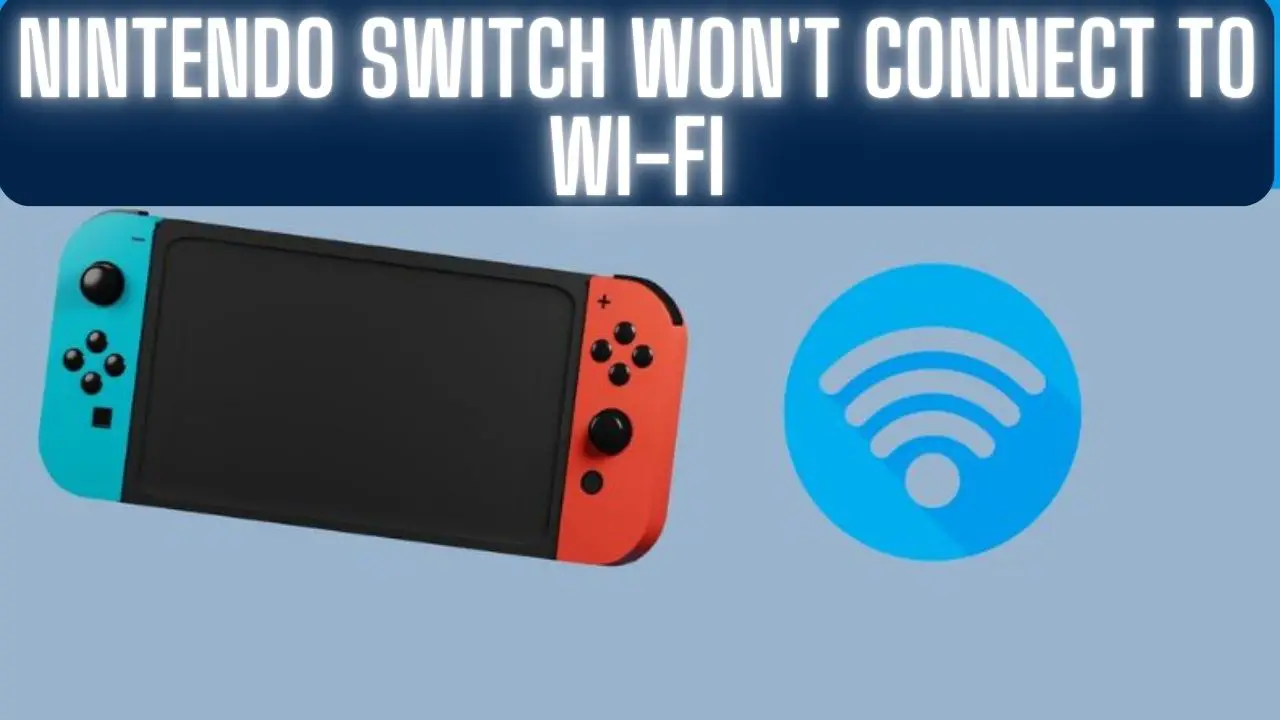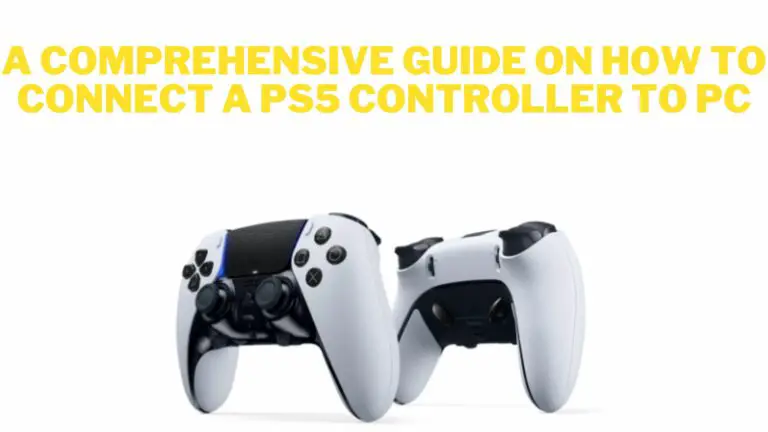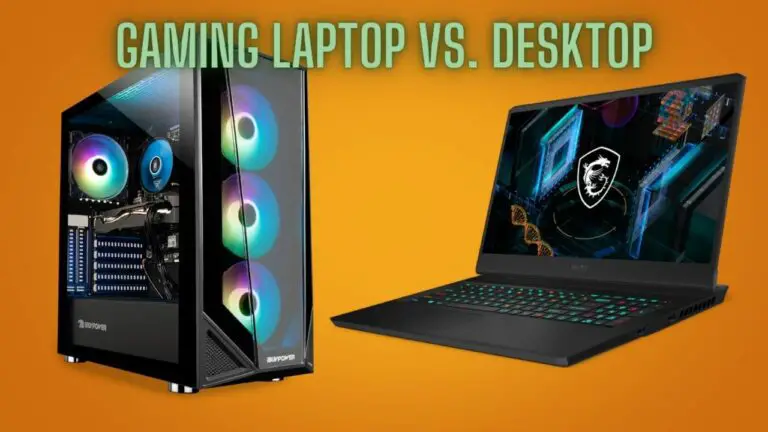Nintendo Switch Won’t Connect to Wi-Fi: Troubleshooting Guide
Introduction
The Nintendo Switch is a versatile gaming console known for its portability and ability to connect to Wi-Fi networks for online gaming, updates, and accessing various online features. However, encountering issues where the Nintendo Switch won’t connect to Wi-Fi can be frustrating for users. This guide aims to provide troubleshooting steps and solutions to address this issue effectively.
In this guide, we will explore common reasons why a Nintendo Switch may fail to connect to Wi-Fi networks and provide step-by-step instructions to troubleshoot and resolve the problem. By following these steps, users can potentially identify the underlying issue causing the connectivity issue and restore their Nintendo Switch’s ability to connect to Wi-Fi networks.
We will cover initial checks to ensure basic connectivity factors are in place, followed by troubleshooting steps to address common issues such as signal strength, incorrect Wi-Fi passwords, router problems, and software updates. Additionally, advanced troubleshooting techniques and additional considerations will be discussed to help users diagnose and resolve more complex Wi-Fi connectivity issues.
By the end of this guide, users should have a better understanding of how to troubleshoot and resolve Wi-Fi connectivity issues with their Nintendo Switch, allowing them to enjoy uninterrupted gaming experiences and access online features seamlessly. Let’s begin by understanding the potential reasons behind the Nintendo Switch’s failure to connect to Wi-Fi networks.
Understanding the Issue
When a Nintendo Switch fails to connect to Wi-Fi, several factors could be contributing to the problem. Understanding these potential issues can help users troubleshoot effectively. Here are some common reasons why a Nintendo Switch may encounter Wi-Fi connectivity issues:
- Weak Wi-Fi Signal: If the Wi-Fi signal strength is weak or unstable, the Nintendo Switch may struggle to establish a stable connection. This can occur if the console is too far from the router or if there are physical barriers obstructing the signal.
- Incorrect Wi-Fi Password: Inputting an incorrect Wi-Fi password during the setup process will prevent the Nintendo Switch from connecting to the network. It’s essential to double-check the password to ensure it’s entered correctly.
- Router Issues: Problems with the Wi-Fi router, such as firmware glitches, network congestion, or router settings misconfigurations, can hinder the Nintendo Switch’s ability to connect. Restarting the router or adjusting its settings may resolve the issue.
- Nintendo Switch Software Update: Outdated system software on the Nintendo Switch can sometimes cause Wi-Fi connectivity issues. Installing the latest system updates can potentially fix compatibility issues and improve network connectivity.
- Network Interference: Interference from other electronic devices, neighboring networks, or environmental factors like thick walls or metal objects can disrupt Wi-Fi signals and prevent the Nintendo Switch from connecting reliably.
- Router Security Settings: Some routers may have security settings or firewall configurations that conflict with the Nintendo Switch’s network requirements. Adjusting these settings may be necessary to establish a connection.
- Hardware or Software Faults: In rare cases, hardware or software faults within the Nintendo Switch itself could be causing the Wi-Fi connectivity problem. Performing a system reset or contacting Nintendo Support may be required for further assistance.
Understanding these potential issues will guide users in troubleshooting their Nintendo Switch’s Wi-Fi connectivity problems effectively. By identifying the underlying cause, users can take appropriate steps to resolve the issue and regain access to Wi-Fi networks for online gaming and other online features. Now, let’s proceed with initial checks to ensure basic connectivity factors are in place before troubleshooting further.
Initial Checks
Before diving into troubleshooting steps, it’s essential to perform some initial checks to ensure basic connectivity factors are in place. Here are some initial checks to consider when your Nintendo Switch won’t connect to Wi-Fi:
- Wi-Fi Signal Strength:
- Check the signal strength indicator on the Nintendo Switch. If the signal is weak or non-existent, move closer to the Wi-Fi router to improve connectivity. Ensure there are no physical obstructions blocking the signal path between the console and the router.
- Wi-Fi Router Status:
- Verify that the Wi-Fi router is powered on and functioning correctly. Check if other devices can connect to the Wi-Fi network without issues. If other devices are also experiencing connectivity problems, there may be an issue with the router itself.
- Router Placement:
- Ensure the Wi-Fi router is placed in an optimal location, preferably in a central area of your home or office. Avoid placing the router near electronic devices or objects that could cause interference, such as microwaves, cordless phones, or metal surfaces.
- Wi-Fi Network Name and Password:
- Double-check the Wi-Fi network name (SSID) and password entered on the Nintendo Switch. Ensure they match the credentials of your Wi-Fi network exactly, including any capitalization or special characters. Typos or incorrect passwords can prevent the console from connecting.
- Restart the Nintendo Switch:
- Perform a soft restart of the Nintendo Switch by holding down the power button for a few seconds and selecting “Power Options” > “Restart.” Restarting the console can refresh system settings and potentially resolve connectivity issues.
- Restart the Wi-Fi Router:
- Power cycle the Wi-Fi router by unplugging it from the power source, waiting for 30 seconds, and then plugging it back in. Allow the router to restart fully and re-establish the Wi-Fi network.
- Check for Router Firmware Updates:
- Access the router’s administration interface through a web browser and check for any available firmware updates. Updating the router’s firmware can address compatibility issues and improve overall performance.
- Network Settings Verification:
- Review the network settings on the Nintendo Switch to ensure they are configured correctly. Check if the console is set to connect to the correct Wi-Fi network and if any manual IP or DNS settings are entered correctly.
By performing these initial checks, you can identify potential issues that may be affecting the Nintendo Switch’s ability to connect to Wi-Fi. If the issue persists after conducting these checks, proceed to the troubleshooting steps to diagnose and resolve the problem further.
Troubleshooting Steps
If your Nintendo Switch still won’t connect to Wi-Fi after performing initial checks, you can follow these troubleshooting steps to diagnose and resolve the problem:
- Restart the Nintendo Switch:
- Perform a soft restart of the Nintendo Switch by holding down the power button for a few seconds and selecting “Power Options” > “Restart.” Restarting the console can refresh system settings and potentially resolve connectivity issues.
- Check Wi-Fi Signal Strength:
- Move closer to the Wi-Fi router to improve signal strength. Avoid obstructions such as walls, floors, and electronic devices that may interfere with the Wi-Fi signal.
- Verify Wi-Fi Password:
- Double-check the Wi-Fi network name (SSID) and password entered on the Nintendo Switch. Ensure they match the credentials of your Wi-Fi network exactly, including any capitalization or special characters.
- Restart the Wi-Fi Router:
- Power cycle the Wi-Fi router by unplugging it from the power source, waiting for 30 seconds, and then plugging it back in. Allow the router to restart fully and re-establish the Wi-Fi network.
- Update Nintendo Switch System Software:
- Ensure your Nintendo Switch has the latest system software updates installed. Go to “System Settings” > “System” > “System Update” to check for and install any available updates.
- Forget and Reconnect to Wi-Fi Network:
- On the Nintendo Switch, go to “System Settings” > “Internet” > “Internet Settings.”
- Select the Wi-Fi network you’re trying to connect to and choose “Change Settings.”
- Select “Delete Settings” to forget the network.
- Reconnect to the Wi-Fi network by selecting it from the list of available networks and entering the password when prompted.
- Adjust Router Settings:
- Access the router’s administration interface through a web browser and adjust settings such as security type (WPA2/WPA3), channel selection, and wireless mode (2.4GHz/5GHz). Consult the router’s manual or manufacturer’s website for instructions on accessing and configuring router settings.
- Check for Network Interference:
- Move electronic devices that may cause interference away from the Wi-Fi router. Consider using Wi-Fi analyzer apps to identify nearby networks and select the least congested Wi-Fi channel for optimal performance.
- Test Connection with Other Devices:
- Verify if other devices can connect to the Wi-Fi network without issues. If other devices are also experiencing connectivity problems, there may be an issue with the router or network configuration.
- Contact Nintendo Support:
- If the issue persists after trying the above steps, contact Nintendo Support for further assistance. Provide details about the problem, steps you’ve already taken to troubleshoot, and any error codes or messages received.
By following these troubleshooting steps, you can diagnose and resolve Wi-Fi connectivity issues with your Nintendo Switch. If the problem persists, contacting Nintendo Support may be necessary for additional assistance or further troubleshooting steps.
Advanced Troubleshooting
If basic troubleshooting steps fail to resolve the issue, advanced troubleshooting techniques may be necessary to diagnose and address more complex Wi-Fi connectivity issues with your Nintendo Switch. Here are some advanced troubleshooting steps to consider:
- Adjust Router Settings:
- Access the router’s administration interface through a web browser and adjust advanced settings such as security settings (e.g., WPA2/WPA3), channel width, and transmit power. Experiment with different settings to optimize Wi-Fi performance and compatibility with the Nintendo Switch.
- Check for Interference:
- Use Wi-Fi analyzer apps to identify sources of interference in your area, such as neighboring networks, Bluetooth devices, or electronic appliances. Choose Wi-Fi channels with minimal interference and adjust router settings accordingly.
- Test Different Wi-Fi Bands:
- If your router supports both 2.4GHz and 5GHz Wi-Fi bands, try connecting the Nintendo Switch to each band separately. Some devices may perform better on one band over the other due to differences in signal propagation and interference.
- Reset Network Settings on Nintendo Switch:
- On the Nintendo Switch, go to “System Settings” > “Internet” > “Internet Settings.”
- Select your Wi-Fi network, then choose “Change Settings” > “Delete Settings” to remove the network configuration.
- Restart the Nintendo Switch, then reconnect to the Wi-Fi network and re-enter the network credentials.
- Update Router Firmware:
- Check if there are any firmware updates available for your router. Updating the router’s firmware can address known issues and improve compatibility with devices like the Nintendo Switch. Follow the manufacturer’s instructions for updating router firmware.
- Check for MAC Address Filtering:
- Verify if MAC address filtering is enabled on the router. If MAC address filtering is enabled, ensure the Nintendo Switch’s MAC address is added to the router’s allowed devices list. You can find the Nintendo Switch’s MAC address in the console’s network settings.
- Consider Wi-Fi Extenders or Mesh Systems:
- If Wi-Fi coverage is inadequate in certain areas of your home or office, consider installing Wi-Fi extenders or a mesh Wi-Fi system to improve coverage and signal strength. Position the Wi-Fi extenders strategically to ensure optimal coverage throughout your space.
- Perform a Factory Reset on the Nintendo Switch:
- As a last resort, you can perform a factory reset on the Nintendo Switch to restore it to its default settings. Note that this will erase all data and settings on the console, so back up any important data before proceeding. To perform a factory reset, go to “System Settings” > “System” > “Formatting Options” > “Initialize Console” and follow the on-screen instructions.
- Contact Nintendo Support:
- If advanced troubleshooting steps fail to resolve the issue, contact Nintendo Support for further assistance. Provide detailed information about the problem, steps you’ve taken to troubleshoot, and any error codes or messages received.
By utilizing these advanced troubleshooting techniques, you can potentially diagnose and resolve more complex Wi-Fi connectivity issues with your Nintendo Switch. If the problem persists, contacting Nintendo Support may be necessary for additional assistance or further troubleshooting steps tailored to your specific situation.
Additional Considerations
In addition to basic and advanced troubleshooting steps, there are several additional considerations to keep in mind when addressing Wi-Fi connectivity issues with your Nintendo Switch. These considerations can help you further optimize your network setup and improve the overall reliability of your wireless connection. Here are some additional considerations:
- Router Placement:
- Ensure that the Wi-Fi router is positioned in a central location within your home or office to provide optimal coverage to all areas. Avoid placing the router near thick walls, large metal objects, or other electronic devices that may interfere with the Wi-Fi signal.
- Signal Boosters or Repeaters:
- Consider using signal boosters or Wi-Fi repeaters to extend the range of your Wi-Fi network and improve coverage in areas where the signal is weak or unreliable. Place these devices strategically to ensure maximum coverage and signal strength.
- Quality of Service (QoS) Settings:
- Configure Quality of Service (QoS) settings on your router to prioritize gaming traffic and ensure a smoother online gaming experience on your Nintendo Switch. QoS settings can help reduce latency and packet loss by giving priority to gaming data over other types of network traffic.
- Network Bandwidth:
- Monitor and manage network bandwidth usage to prevent network congestion and ensure sufficient bandwidth is available for gaming on your Nintendo Switch. Limit the number of devices connected to the network simultaneously and avoid bandwidth-heavy activities during gaming sessions.
- Wi-Fi Security:
- Enable Wi-Fi security features such as WPA2 or WPA3 encryption to protect your network from unauthorized access and ensure the privacy and security of your data. Use strong, unique passwords for your Wi-Fi network to prevent unauthorized users from gaining access.
- Regular Router Maintenance:
- Perform regular maintenance tasks on your router, such as updating firmware, clearing cache and logs, and rebooting the router periodically to keep it running smoothly and minimize potential issues that may affect Wi-Fi connectivity.
- Network Monitoring Tools:
- Use network monitoring tools or apps to monitor Wi-Fi signal strength, network performance, and connected devices. These tools can help you identify and troubleshoot potential issues proactively before they impact your Nintendo Switch’s connectivity.
- Alternative Connection Methods:
- If Wi-Fi connectivity issues persist, consider using alternative connection methods such as a wired Ethernet connection or a mobile hotspot. These alternative methods may provide a more stable and reliable connection for gaming on your Nintendo Switch.
By considering these additional factors and implementing appropriate measures, you can optimize your Wi-Fi network setup and improve the overall reliability of your Nintendo Switch’s wireless connection. If you continue to experience Wi-Fi connectivity issues despite troubleshooting and optimization efforts, consider seeking assistance from a professional network technician or contacting Nintendo Support for further assistance tailored to your specific situation.
FAQS
My Nintendo Switch won’t connect to Wi-Fi. What should I do first?
- First, ensure that your Wi-Fi network is working correctly by testing it with other devices. If your Wi-Fi network is functioning, proceed to troubleshoot your Nintendo Switch.
How do I restart my Nintendo Switch?
- To restart your Nintendo Switch, press and hold the power button on the top of the console for a few seconds. When the power menu appears on the screen, select “Power Options” and then choose “Restart.”
What is the Airplane Mode on the Nintendo Switch, and how can it help with Wi-Fi issues?
- Airplane Mode is a feature on the Nintendo Switch that disables all wireless communication, including Wi-Fi and Bluetooth. Toggling Airplane Mode on and off can reset the wireless connections and potentially resolve Wi-Fi problems.
My Nintendo Switch can’t connect to a specific Wi-Fi network. What should I do?
- If your Switch is having trouble connecting to a specific network, try the following steps:
- Go to “System Settings” > “Internet” > “Internet Settings.”
- Select the problematic network and choose “Change Settings.”
- Select “Delete” to forget the network.
- Reconnect to the network and enter the password.
How can I check the strength of my Wi-Fi signal on the Nintendo Switch?
- You can check the Wi-Fi signal strength on the Nintendo Switch by looking at the Wi-Fi icon in the upper-right corner of the screen. More bars indicate a stronger signal.
Conclusion:
A Nintendo Switch that won’t connect to Wi-Fi can be frustrating, but most issues can be resolved with some troubleshooting. Start with the basic steps like restarting your console and router, checking your network settings, and ensuring there’s no interference. If problems persist, don’t hesitate to reach out to Nintendo support for more in-depth assistance. With the right steps, you can get your Switch back online and enjoy your gaming experience.







